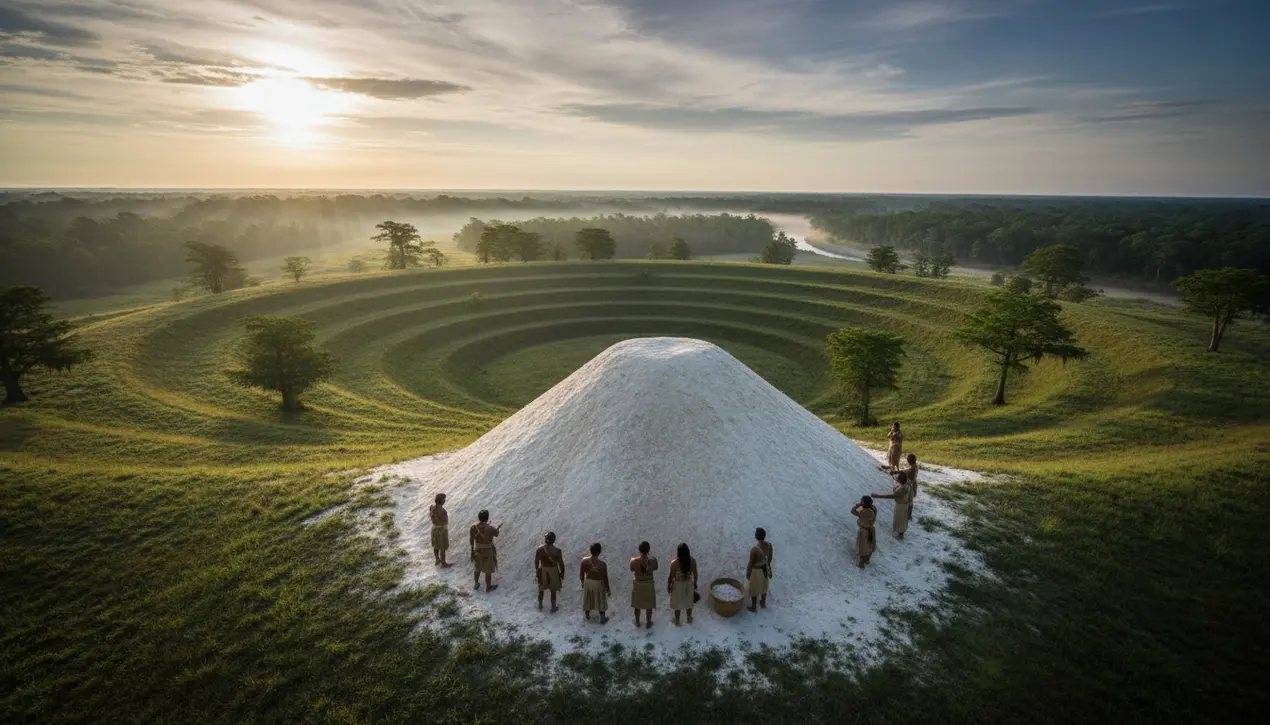
SciencearchaeologyExcavations and Discoveries
Why did ancient people build massive, mysterious mounds in Louisiana?
TH
Thomas Green
1 day ago7 min read3 comments
The ancient landscape of northeastern Louisiana holds one of North America's most profound archaeological enigmas—the Poverty Point Earthworks, a sprawling complex of massive, concentric ridges and towering mounds constructed by hunter-gatherer societies over three millennia ago. For generations, the prevailing academic narrative suggested that such monumental architecture could only arise under the coercive whip of a centralized, hierarchical chiefdom, a society with elites commanding labor from the masses.However, a seismic shift in our understanding is now unfolding, driven by groundbreaking radiocarbon dating and a meticulous re-examination of artifacts, which collectively paint a radically different picture. This was not a despotic state but a vast, temporary gathering—a kind of prehistoric pilgrimage site—where far-flung, egalitarian communities converged not under duress, but in a collective, spiritual endeavor to achieve harmony with a volatile and unpredictable natural world.Imagine the scene: thousands of individuals, traveling from hundreds of miles away, arriving at this bend in the Mississippi River floodplain, not to be commanded by a king, but to participate in a grand, cooperative project. They moved an estimated 2 million cubic yards of soil, basketload by basketload, to erect Mound A, a colossal earthen structure that still stands 72 feet high, a testament to communal will.The new data suggests these were not permanent settlements but seasonal congregations, where people met to trade exotic materials like quartz crystal from the Ozarks and copper from the Great Lakes, to worship, and to engage in intricate rituals designed to appease the powerful, capricious forces of nature—the river that could flood or recede, the sun that could bless or scorch. This re-contextualization is as revolutionary as our modern reassessment of celestial mechanics; it forces us to abandon the simplistic notion that monumentality is a direct proxy for social complexity defined by oppression.Instead, Poverty Point emerges as a testament to a sophisticated, alternative social logic, one built on shared belief, collective ritual, and a deep-seated desire to calibrate human existence with the cosmic and environmental rhythms that governed their lives. It stands as a silent, earthen monument to the power of cooperation, a pre-agricultural society achieving architectural grandeur through spiritual consensus, challenging our very definitions of civilization and leaving a mysterious, majestic legacy in the Louisiana soil that continues to whisper its secrets to those who listen.
#featured
#Poverty Point
#ancient mounds
#hunter-gatherers
#radiocarbon dating
#earthworks
#egalitarian societies
#archaeology
Stay Informed. Act Smarter.
Get weekly highlights, major headlines, and expert insights — then put your knowledge to work in our live prediction markets.
Related News
Comments
Loading comments...
© 2025 Outpoll Service LTD. All rights reserved.